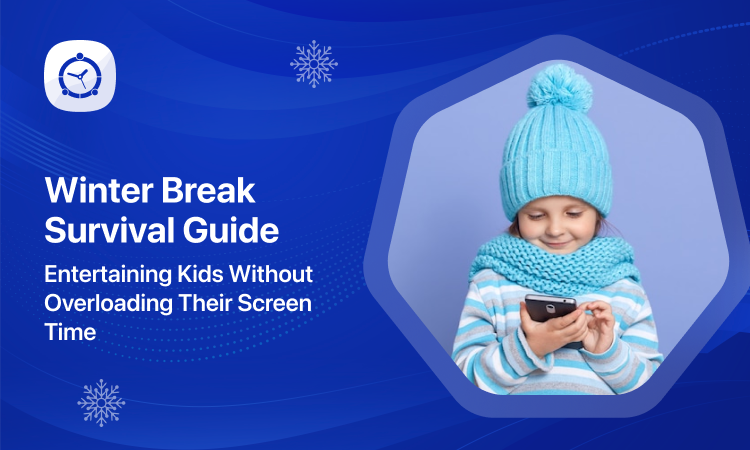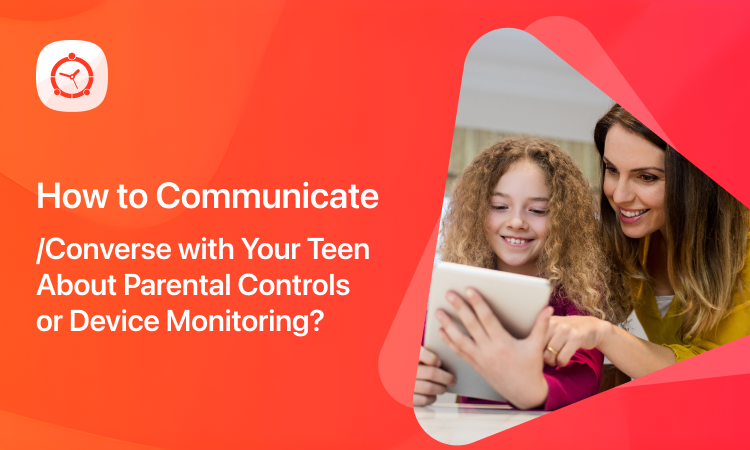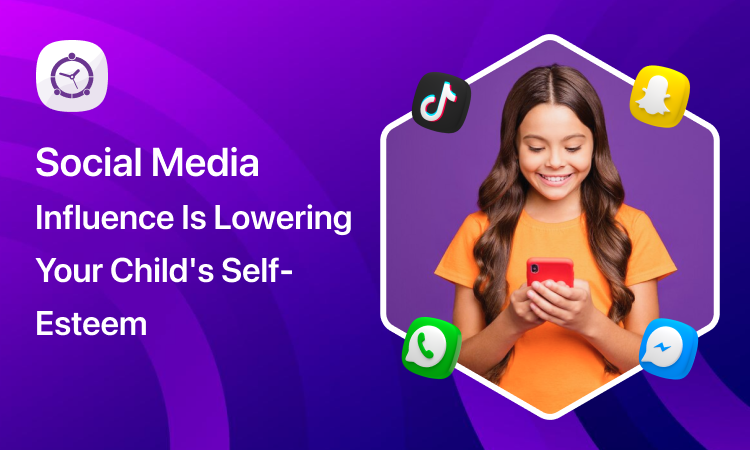Parenting teens in the digital age is no small feat. With the ever-evolving digital landscape, ensuring your teen’s safety while fostering trust and mutual understanding can be challenging. One crucial tool in this endeavor is the use of parental controls. However, the success of these tools often depends on how they are introduced and discussed with teens. In this blog post, we’ll explore strategies for effectively communicating with your teen about parental controls and highlight how FamilyTime parental control app can support this journey.
The Importance of Open Communication
Before diving into the technical aspects of parental controls, it’s essential to establish open and honest communication with your teen. Teens value their independence and privacy, and any sudden imposition of restrictions can lead to resistance. Explaining the purpose and benefits of parental controls helps set the tone for a constructive conversation.
Start by emphasizing that parental controls are not about mistrust but about safety, guidance, and fostering healthy digital habits. Use real-world analogies, such as comparing parental controls to seat belts in a car—they’re there to protect, not to restrict unnecessarily.
Preparing for the Conversation
Preparation is key when introducing parental controls to your teen. Here are some steps to consider:
- Educate Yourself First: Understand the features and benefits of the FamilyTime parental control app. Familiarize yourself with its functionalities, such as screen time management, app blocking, and location tracking.
- Anticipate Questions: Your teen may have concerns about privacy and autonomy. Be ready to address these questions with empathy and clarity.
- Choose the Right Moment: Select a time when your teen is relaxed and open to conversation. Avoid bringing up the topic during heated arguments or moments of stress.
Starting the Conversation
When discussing parental controls, it’s crucial to approach the topic collaboratively. Instead of dictating rules, involve your teen in the decision-making process. Here’s how:
- Acknowledge Their Perspective: Start by asking your teen how they feel about their digital habits and online safety. Listen actively without interrupting.
- Share Your Concerns: Explain why you’re considering implementing parental controls. Focus on specific concerns, such as exposure to inappropriate content, cyberbullying, or excessive screen time.
- Highlight the Benefits: Discuss how FamilyTime parental control app can help them achieve a healthier digital balance. For example, you can mention how the app’s screen time limits can encourage better focus during homework or improved sleep patterns.
Leveraging FamilyTime’s Features for Mutual Benefit
FamilyTime parental control app offers a range of features that can help create a safer and more balanced digital environment for your teen. Discussing these features during your conversation can make the idea of parental controls more appealing:
- Screen Time Limits: Explain how setting reasonable screen time limits can help your teen avoid distractions and dedicate more time to their studies, hobbies, or family.
- App Blocking: Share how the app can block distracting or age-inappropriate applications during critical times, such as bedtime or study hours.
- Location Tracking: Highlight the peace of mind that comes with knowing your teen’s whereabouts through the app’s GPS tracking feature. Assure them this is not about spying but about ensuring their safety.
- Content Filtering: Discuss how FamilyTime can filter out harmful or inappropriate content, allowing them to explore the internet safely.
By framing these features as tools for mutual benefit rather than restrictions, you’re more likely to gain your teen’s cooperation.
Fostering Transparency and Trust
Transparency is the cornerstone of trust. Be clear about what you’ll monitor and why. For instance, let your teen know if you’ll be using FamilyTime to track their location or monitor app usage. Avoid sneaky or covert monitoring, as it can erode trust and lead to resentment.
Here are some ways to foster trust:
- Set Clear Expectations: Define the rules together and agree on boundaries. For example, decide on daily screen time limits collaboratively.
- Reassure Them: Emphasize that the purpose of using parental controls is not to invade their privacy but to ensure their safety and well-being.
- Review and Adjust: Schedule regular check-ins to review the effectiveness of the controls and make adjustments as needed. This shows your teen that their input matters.
Addressing Resistance
It’s natural for teens to resist the idea of parental controls, especially if they perceive them as an invasion of their privacy. Here’s how you can address their concerns:
- Empathize: Acknowledge their feelings and validate their concerns. For instance, you might say, “I understand that you value your independence, and I’m not trying to take that away.”
- Compromise: Be willing to negotiate on certain aspects. For example, you could agree to relax screen time limits on weekends.
- Showcase Benefits: Highlight how features like app usage reports can help them manage their time better and achieve their personal goals.
Encouraging Self-Regulation
One of the ultimate goals of parental controls is to teach teens self-regulation. Over time, they should develop the skills to manage their digital habits independently. FamilyTime’s features, such as detailed activity reports, can empower teens to understand their usage patterns and make informed decisions.
Encourage your teen to take an active role in setting and adjusting their limits. For instance, they could propose their own screen time schedule or suggest apps to block during study hours. This collaborative approach fosters a sense of responsibility and ownership.
The Role of FamilyTime in Building Healthy Digital Habits
FamilyTime parental control app goes beyond just monitoring and restricting. It provides tools that promote healthy digital habits and strengthen family bonds:
- Daily Activity Reports: These reports offer insights into your teen’s app usage and screen time, enabling productive discussions about their digital habits.
- Customizable Features: FamilyTime’s flexibility allows you to tailor the app’s settings to your teen’s needs and your family’s values.
- SOS Alerts: Teach your teen how to use the SOS feature to alert you in emergencies, reinforcing the app’s role as a safety tool.
- Time Banking: Reward your teen for responsible behavior by allowing them to earn extra screen time, making the app’s use feel less restrictive.
Concluding the Conversation
End the discussion on a positive note. Reiterate your trust in your teen and your commitment to their safety and well-being. Thank them for being open to the conversation and emphasize that you’re in this together.
Final Thoughts
Introducing parental controls to your teen doesn’t have to be a contentious process. By fostering open communication, involving your teen in the decision-making process, and leveraging the comprehensive features of FamilyTime parental control app, you can create a digital environment that prioritizes safety, trust, and mutual respect.
Remember, the goal is not just to monitor but to guide your teen towards healthy and responsible digital habits. With FamilyTime as your ally, this journey becomes not only manageable but also rewarding. Start the conversation today, and take the first step towards a balanced digital life for your family.








